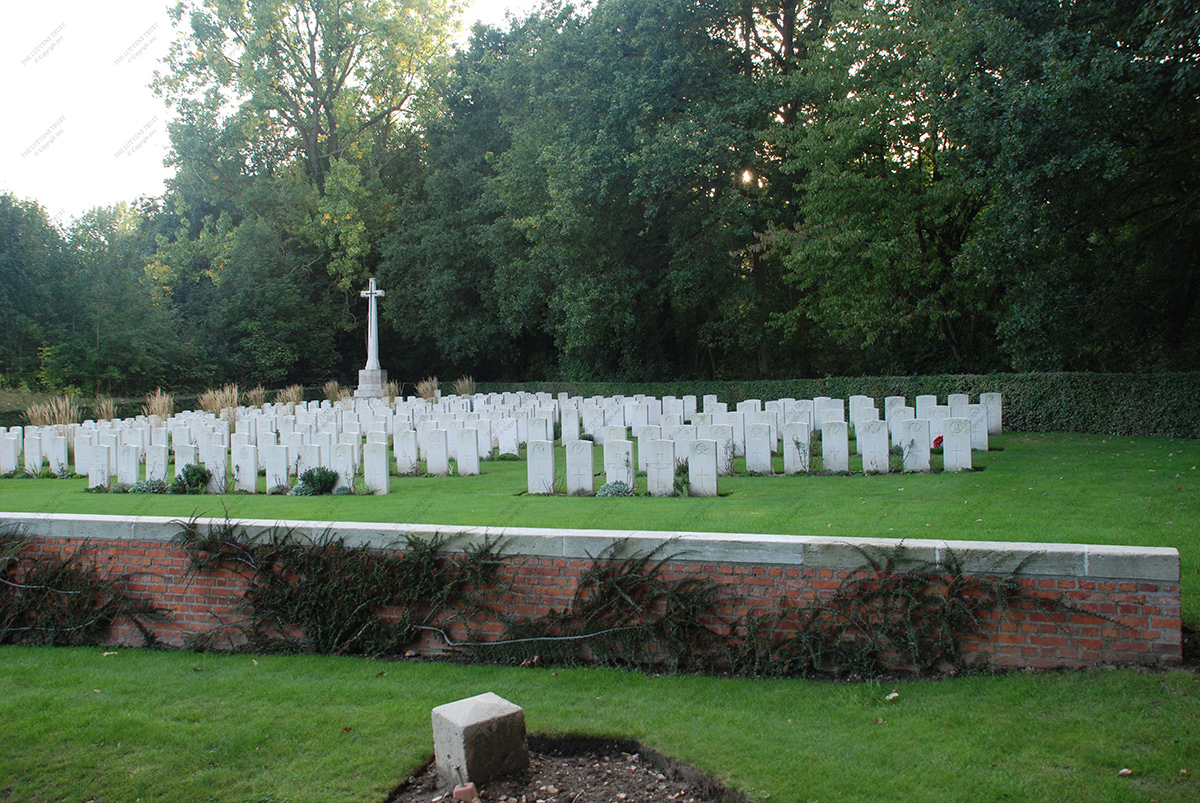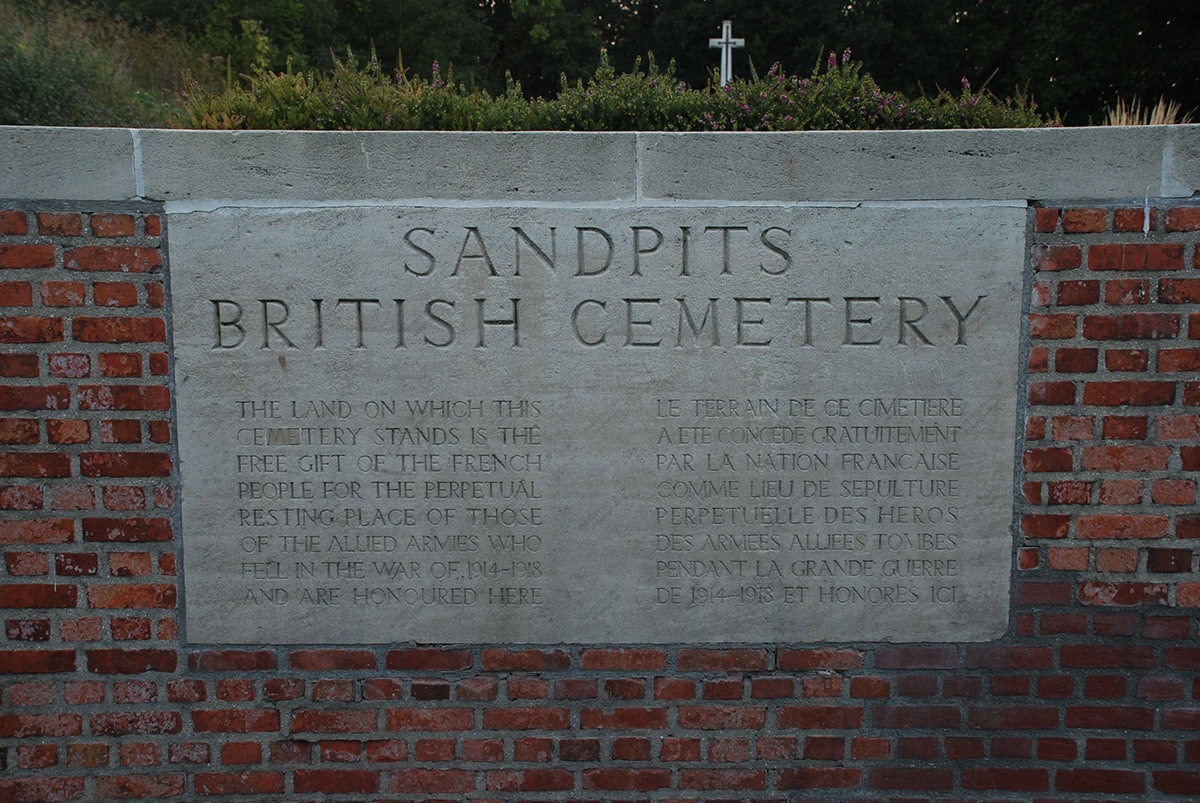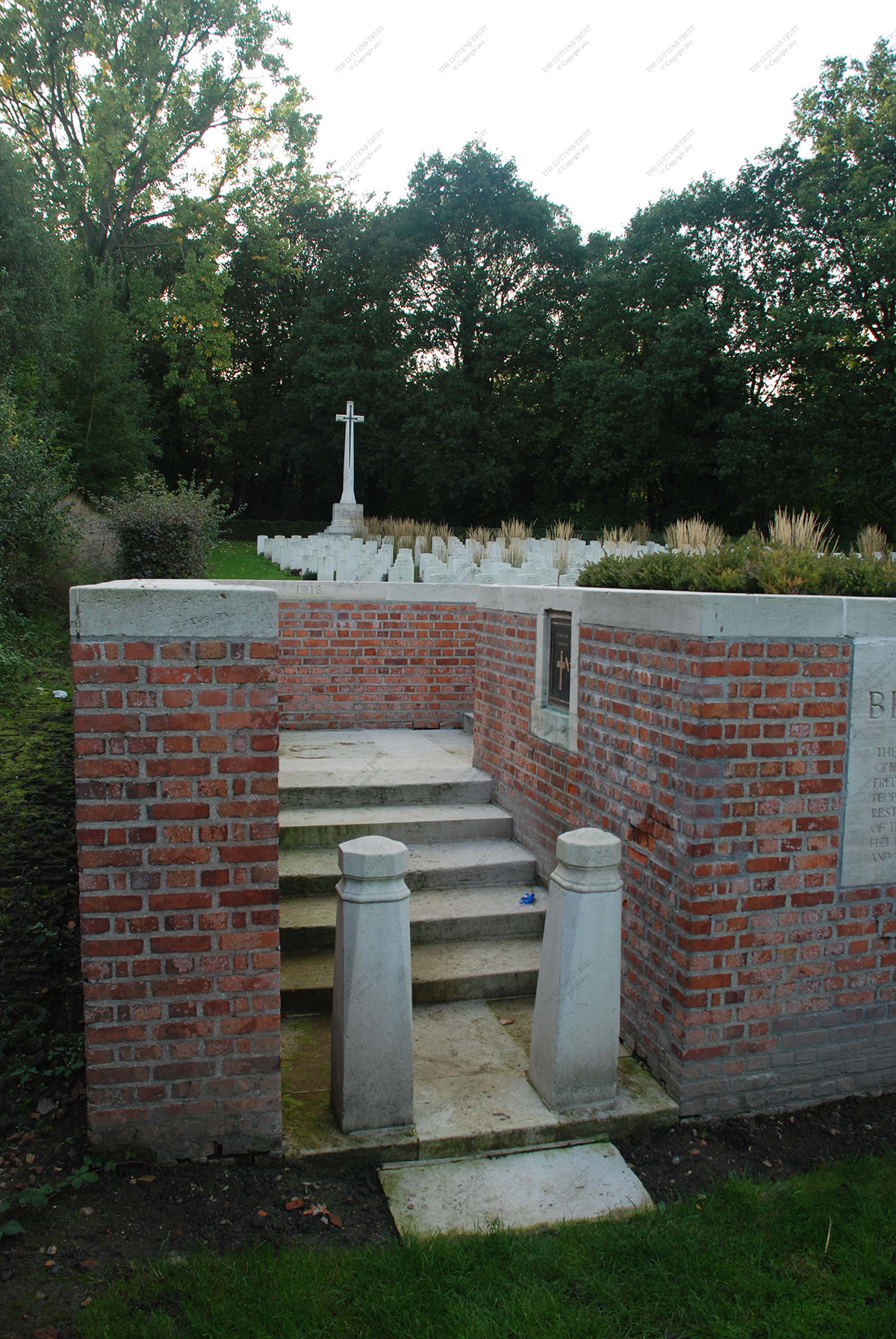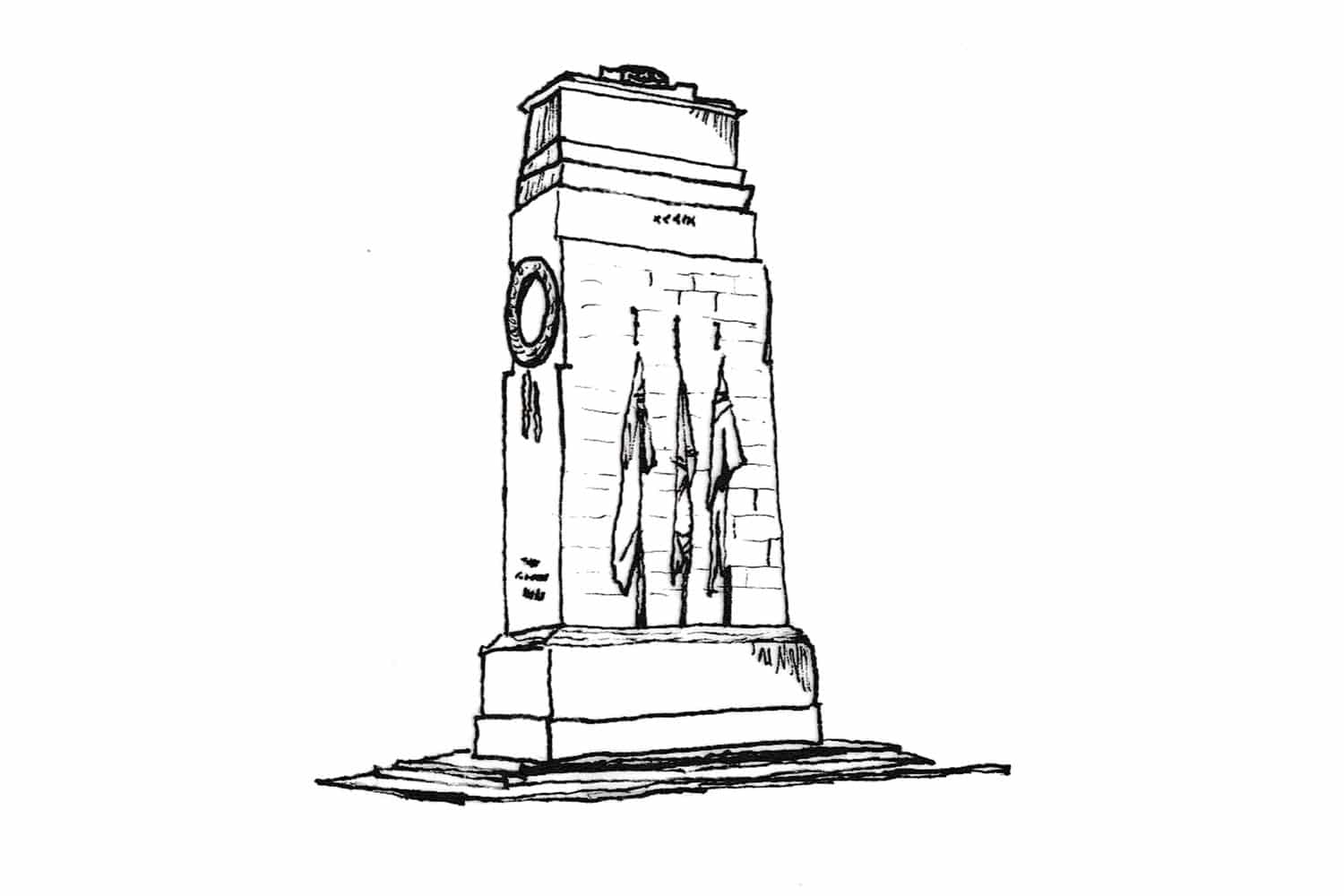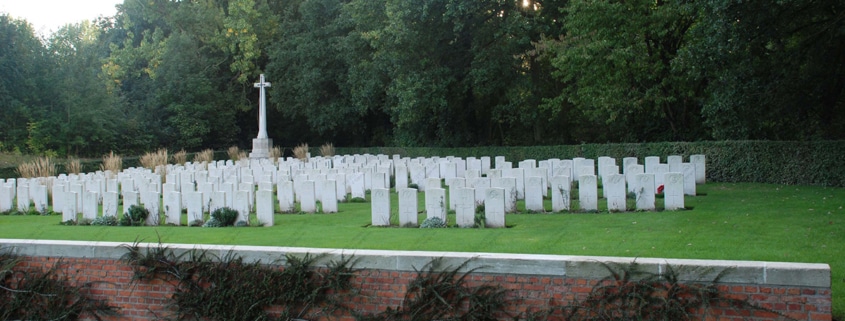
Description
The cemetery was begun in April 1918. The layout is regular and the graves are oriented toward the east. The number of graves is too small for a War Stone, although space appears to have been created at the front and Lutyens took into account that the War Stone might be placed there at a later date.The ground lies appealingly in an open spot in the middle of groves at the end of a corn field. The field of graves is triangular in form and the entrance is situated the corner of the long side. The visitor is guided via the grassy strip all the way along the retaining wall in front the cemetery to the entrance. The wall becomes higher due to the fact that the path descends. A plateau stairway has been cut into the field, leading visitors to the cemetery, allowing them to change direction twice so that they actually turn back again. If the War Stone had been placed on the plateau, this effect would have been much more dramatic than it currently is. The Cross of Sacrifice stands at the highest point at the apex of the triangle. (Geurst, 2010, p.407)
Bibliography
Geurst, J. (2010) Cemeteries of the Great War by Sir Edwin Lutyens. Rotterdam: 010 Publishers.Also Cited In
Listing Grade
Coming soonListing Reference
Client
Imperial War Graves Commission
